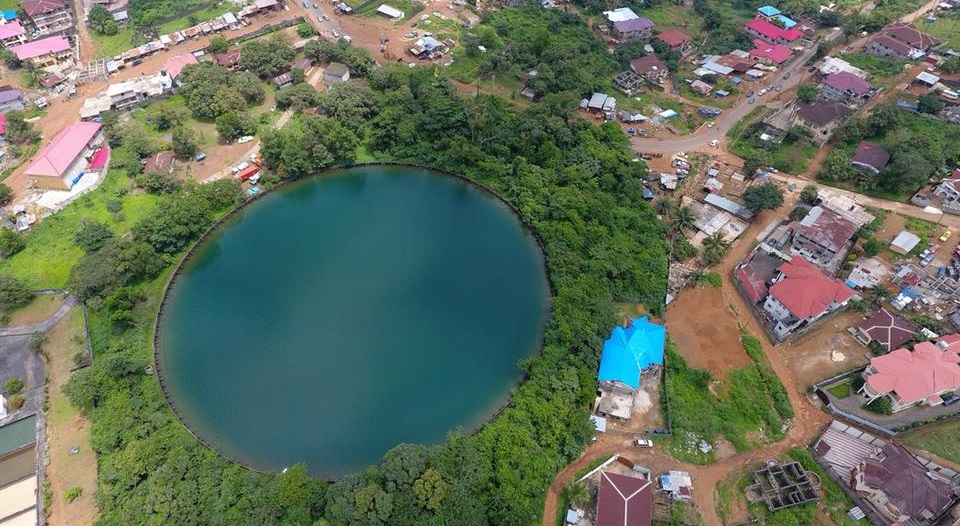Rainwater harvesting is an ancient practice that has gained renewed importance in modern times due to increasing water scarcity, population growth, and climate change. This practice involves collecting and storing rainwater for various uses, including drinking, irrigation, and industrial processes.
This comprehensive guide will cover the methods, design, benefits, and maintenance of rainwater harvesting systems, as well as the challenges and best practices for preserving harvested rainwater Furthermore, harvesting and preserving rainwater can complement the century-old-dam (Guma Dam) which is mostly inefficient to supply water to homes in Freetown and its environ during the dry season. This can reduce the burden on people accessing clean water in the dry season.
Moreover, rainwater is a vital resource, and its availability is becoming increasingly unpredictable. Rainwater harvesting offers several key benefits:
Water Conservation: Reduces reliance on groundwater and municipal water supplies.
Cost Savings: Decreases water bills and reduces the need for large-scale infrastructure. Environmental Benefits: Mitigates urban flooding reduces soil erosion and decreases energy consumption for water treatment and distribution.
Water Quality: Rainwater is relatively clean and can be used for various purposes with minimal treatment.
Methods of Rainwater Harvesting:
There are two primary methods of rainwater harvesting: rooftop rainwater harvesting and surface runoff harvesting.
Rooftop Rainwater Harvesting: This method involves collecting rainwater from the roofs of buildings and directing it into storage systems.
Key components include:
Catchment Area: The roof surface where rain falls.
Gutters and Downspouts: Channels that guide gained the water from the roof to store modern tanks.
First Flush Diverter: A device that diverts the initial runoff, which may contain contaminants from the roof.
Filtration System: Removes debris and other contaminants from the water.
Storage Tanks: Containers where the harvested water is stored for later use.
Steps for Rooftop Rainwater Harvesting:
Assessment of Rainfall and Roof Area: Calculate the potential volume of rainwater that can be harvested based on average rainfall and roof area.
Design of Collection System: Design gutters, downspouts, and filters to efficiently capture and direct water to storage.
Installation of First Flush Diverter.
Install a device to divert the initial contaminated runoff.
Construction of Storage Tanks: Choose and install appropriate storage tanks based on the volume of water to be stored and space availability.
Maintenance: Regularly clean and inspect the system to ensure its efficiency and longevity,
Surface Runoff Harvesting: This method involves collecting and storing rainwater that runs off surfaces like roads, fields, and open grounds.
Key components include: Contour Bund and smalll earthen embankments constructed along the contour lines to slow down water flow and promote infiltration.
Check Dams: Small barriers built across watercourses to slow water flow an promote infiltration and storage.
Infiltration Pits: Pits filled with gravel or sand that allows water to device percolate into the ground. Storage Ponds or Tanks: Larger containers where collected water can be stored for later use.
Steps for Surface Runoff Harvesting: Site Assessment: Identify suitable locations for constructing bunds, check dams, and infiltration pits based on the topography and soil type.
Design of Structures: Design structures to efficiently capture and store runoff. Construction: Build the structures using appropriate materials and techniques.
Maintenance: Regularly inspect and maintain the structures to ensure their effectiveness.
Design and Components of Rainwater Harvesting Systems: Designing an efficient rainwater harvesting system involves several
key considerations:
Catchment Area: The catchment area is the surface from which rainwater is collected. In rooftop systems, this is typically the roof of a building. For surface runoff systems, it can include fields, roads, or other open areas.
Key factors to consider include: Surface Material: Impervious surfaces like metal or tiled roofs are more efficient for water collection than porous surfaces. Size of the Catchment Area: Larger areas collect more water.
Slope and Orientation: A well-sloped surface ensures efficient water flow towards the collection points. Gutters and Downspouts: These channels direct rainwater from the catchment area to Storage system.
Important considerations include Material: Gutters and downspouts should be made of durable, non-corrosive materials like PVC or galvanized steel. Size and Capacity They should be large enough to handle the maximum expected rainfall. Installation Ensure proper slope and secure attachment to prevent leaks and overflows.
First Flush Diverter: This device diverts the initial flow of rainwater, which may contain debris and contaminants, away from the storage system. Key features include:
Capacity: Should be sized to handle the first few millimeters of rainfall Ease of Maintenance. Should be easy to clean and reset.
Filtration System: Filters remove debris, leaves, and other contaminants from the collected rainwater. Types of filters include Mesh Filters. Simple screens that trap large particles. Sand Filters. Layers of sand that trap smaller particles and pathogens. Charcoal Filters Activated charcoal that adsorbs impurities and improves quality
Storage Tanks: Storage tanks hold the harvested rainwater until it is needed. Key considerations include Material: Common materials include plastic (polyethylene), concrete, and metal. Each has its pros and cons in terms of durability, cost, and maintenance.
Size and Capacity: Tanks should be sized based on the volume of water expected and the intended use. Location: Tanks can be placed above ground, underground, or on rooftops, depending on space availability and design preferences.
Distribution System: The distribution system delivers the stored rainwater to points of use. Components include: Pipes and Valves: Should be made of durable materials and de properly sized. Pumps: May be needed to move water from underground tanks to higher elevations.
Control Systems: Automated systems can regulate water flow and monitor tank levels.
A Proper preservation of harvested rainwater is crucial to maintain its quality and prevent contamination.


 2 Comments
2 Comments 










Dear Sierraloaded, rain harvesting is what Guma Valley has been doing for the past 6 decades. Our problem is the lack of adequate storage facilities to keep more water for use during the dry season. As I write the Guma Dam at Mile 13 and Kongo Dam at Regent are spilling (overflowing).
Dear Sierraloaded, rain harvesting is what Guma Valley Water Company has been doing for over 6 decades, our main challenge is the lack of adequate storage facilities (dams and reservoirs) across the Western Area to keep more water for use during the dry season. As I write the Guma Dam at Mile 13 and the Kongo Dam at Regent are spilling (overflowing).